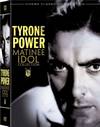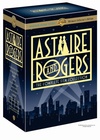


Errol Flynn & Olivia de Havilland
Filmography | Articles | Awards | Downloads | Bibliography | Links | Image Credits | Errol Flynn | Olivia de Havilland
| Article 6 |
Errol Flynn Catches a Tudor in Strand's Film of 'Private Lives of Elizabeth and Essex'by Frank S. NugentNew York Times December 2, 1939, page 24The Warners, we understand, had to call it "The Private Lives of Elizabeth and Essex" because Errol Flynn felt the original Maxwell Anderson title, "Elizabeth the Queen" gave too little marquee credit to his share in the proceedings. After seeing it yesterday at the Strand, with Bette Davis playing the it the way she has, we still think "Elizabeth the Queen" is the way to describe it. It's Queen Bette's picture just as surely as Mr. Flynn is a good-looking young man who should be asked to do no more in pictures than flash an even-toothed smile and present a firm jaw-line. His Essex lacked a head long before the headsman got around to him. What set up the Anderson play when the Theatre Guild presented it in 1930 was the poetic quality of the dialogue he had written, the happy circumstance that a Lynn Fontanne and an Alfred Lunt were charging it with their rich vitality. (Mr. Lunt, of course, had no objection to the marquee's "Elizabeth the Queen.") Dialogue and performance remain the primary virtues of the film, although their aura has been less equally distributed. The glow comes always from that corner of the screen where Elizabeth sits or stands or stamps about. Sometimes it spreads to those around here, to a lady-in-waiting talking of her lover, to Francis Bacon in his political games, even (at times) breaking through the shallow surface of Mr. Flynn's Essex and making him seem almost genuine. If a picture ever rested upon an actress's slender shoulders, this one does upon Miss Davis's. It is an unfair burden, but she has carried it successfully, almost by force of will. How unfair the burden is may be judged when we remind you that Mr. Anderson's casually historic drama was no one-man show (or one-woman show, to put it more correctly), but a tale of conflict which depended upon the even matching of its two combatants. Essex and Elizabeth were lovers, true lovers, he said; but Essex was ambitious, Elizabeth jealous for her throne. They had quarrels and reconciliations, but there could be no reconciliation of his greed for power, her grasp of it. Essex went to the headsman's block; Elizabeth to her bitter reign. Neither had the victory. Fact may be on the physical side of Mr. Flynn's portrait of Essex: he was a young man (in his twenties to Elizabeth's sixties), fatuous and insincere. But Anderson's Essex was compounded not of fact but of a dramatist's good graces. He wanted him virile, saucy, hot-tempered, yet true. He wanted him to eye Elizabeth not with a calf-look but the bold assurance of a favorite. He wanted him able to say of his bewigged, painted, yet fascinating mistress: "I love her, I hate her, I adore her," with at least more conviction than this Essex has been able to muster. (Mr. Flynn recites the line with the sincerity of a small boy apologizing to his teacher for throwing spitballs.) Miss Davis has had to throw her entire weight into the film to offset this insufficiency, to add fire to scenes she knew were beginning to smoulder. Inevitably she has carried a few of them too far, has been guilty of exaggeration and mannered tricks. Significantly, these defects never are apparent in the Essex-less sequences; rarely less than apparent in those she shares with him. The film, of course, is stage struck and almost too heavily freighted on the literary side. But Mr. Anderson's writing is good to hear, and his adapters, Norman Reilly Raine and Aeneas MacKenzie, have employed and deployed it well. Michael Curtiz's direction has provided the illusion, of not the actuality, of movement and, with stunning Technicolor camera work, has created several memorable and beautiful sequences. It is a good film, one well worth seeing; how much better it might have been with an Essex worthy of Miss Davis's Elizabeth we can only surmise. © 1939 New York Times |
Return to the Index of Articles. |
| Current Contest Prize: |
|---|
| Now in Print! |
|---|
| Now on DVD! |
|---|
Buy Videos & DVDs |
|
Buy Movie Posters |
|
Buy Movie Posters |
|
Classic
Movie Merchandise |
|
![]() Printer-friendly version.
Printer-friendly version.
![]() Return
to the top.
Return
to the top.
Last updated:
December 16, 2008.
Reel Classics is a registered trademark of Reel Classics, L.L.C.
© 1997-2009 Reel Classics, L.L.C. All rights reserved. No
copyright is claimed on non-original or licensed material.
Terms of
Use.










